Abstract
1. We have investigated the responses of single neurones in the visual cerebral cortex of the unanaesthetized, isolated cat's forebrain to excitation of one retina with patterned light. The responses of twenty-six cells to the relative movement of two patterns in the visual field have been recorded.
2. We used several forms of relative movement for stimulation, but all of them involved a change in the separation of two parallel and straight light-dark edges.
3. Responses to this form of stimulation were compared with the responses of the same cells to simple movement, that is, movement of the same patterns without change of distance between their borders.
4. All cells showed a response to relative movement that differed from their response to simple movement.
5. The time-locked phasic response differed in 54% of the cells tested. Of cells responding in this way, 83% of tests produced an increased phasic response.
6. Relative movement brought about changes in the mean frequency of discharge in 96% of the cells tested. 82% of these cells responded with an increased rate of firing.
7. Movement relative to a coarse background pattern affected more neurones and produced a greater change in their behaviour than did movement relative to a fine-grained pattern.
8. The neurones tested represented the central part of the visual field (0-10°); while all were affected by relative movement, those representing points furthest from the optic axis appeared to be most susceptible (we found no correlation between size of receptive field and distance from the optic axis).
Full text
PDF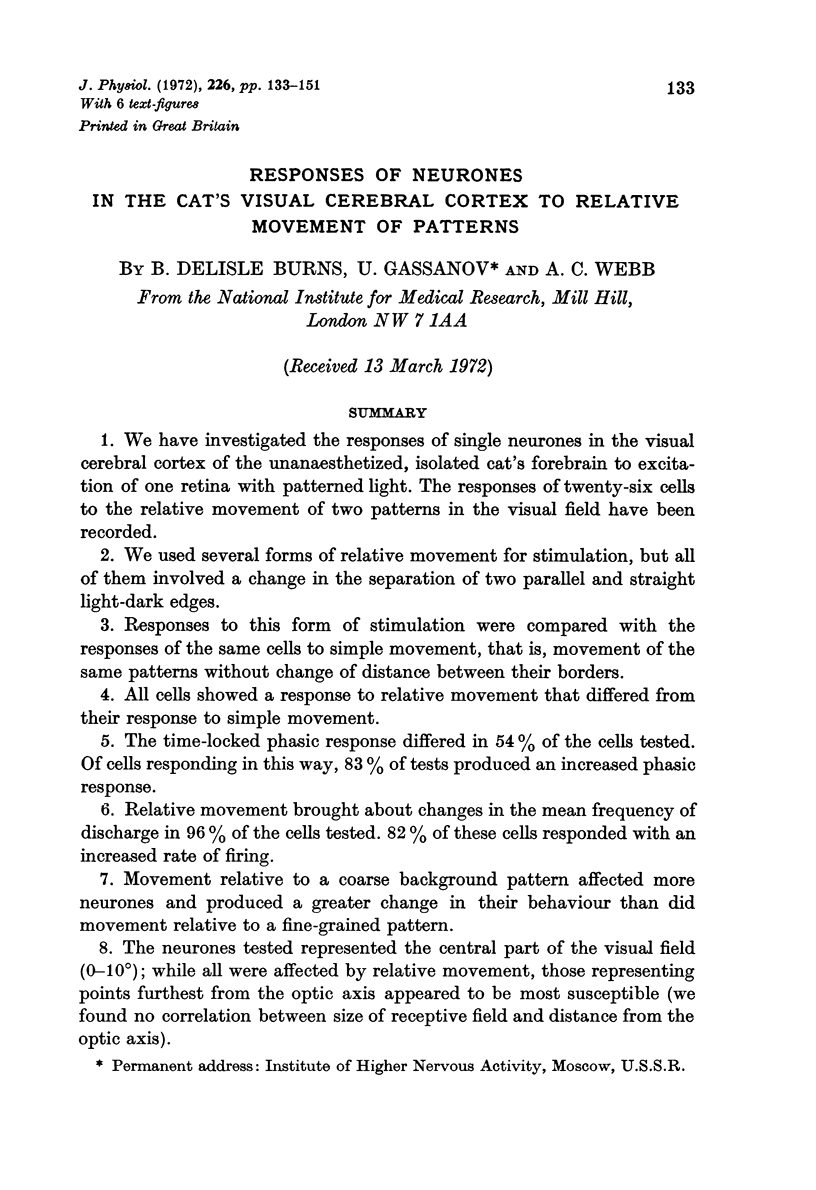

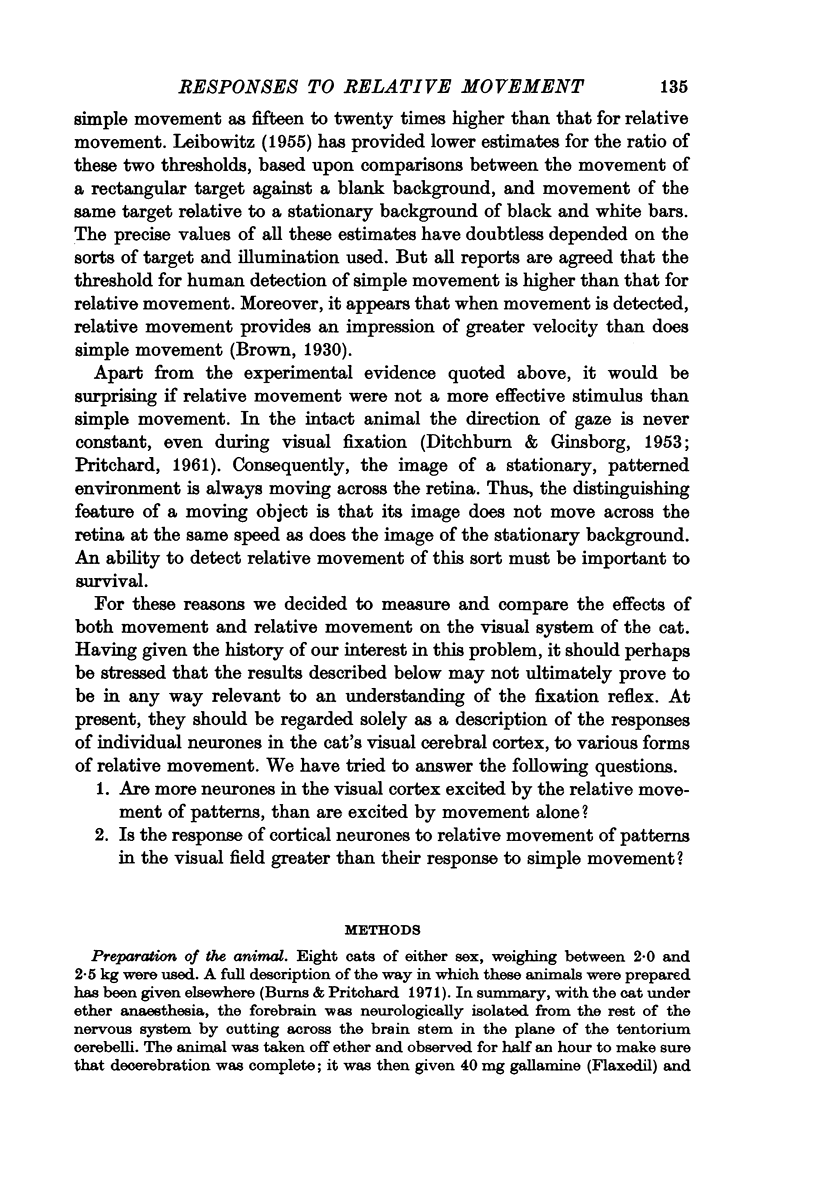
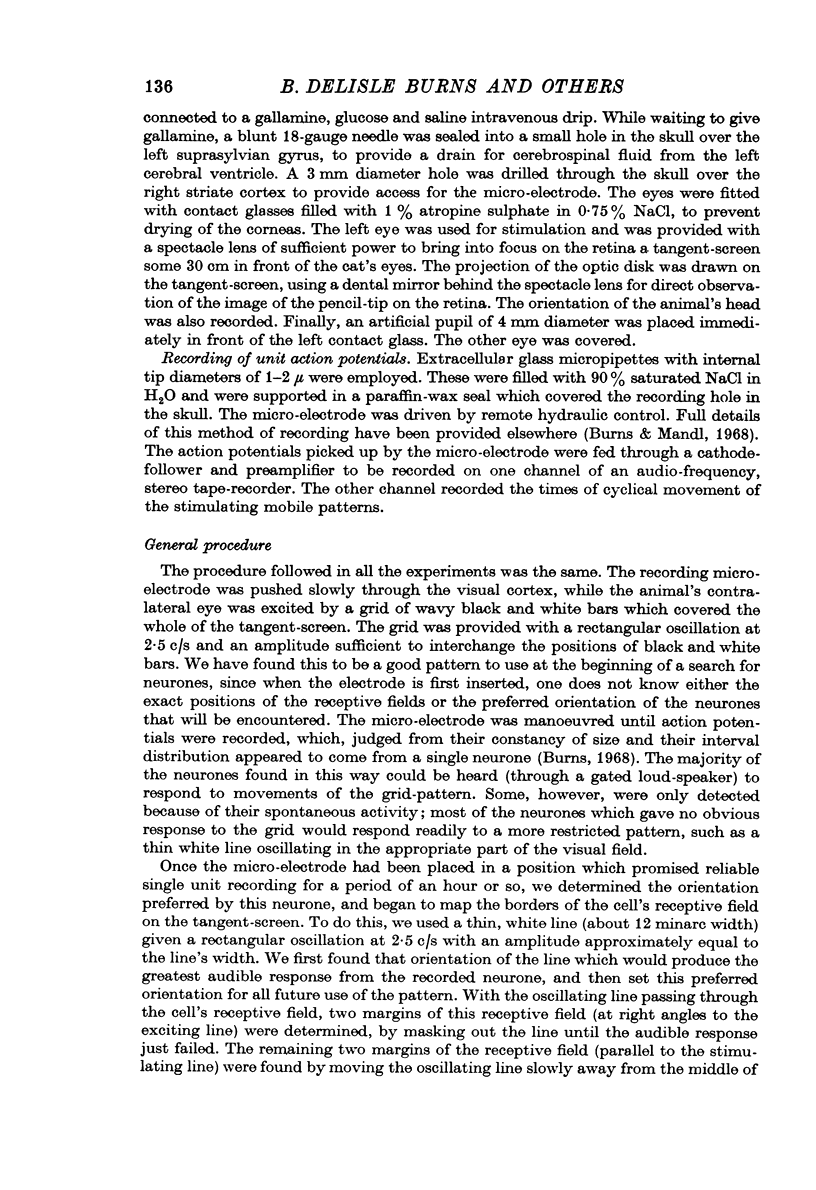
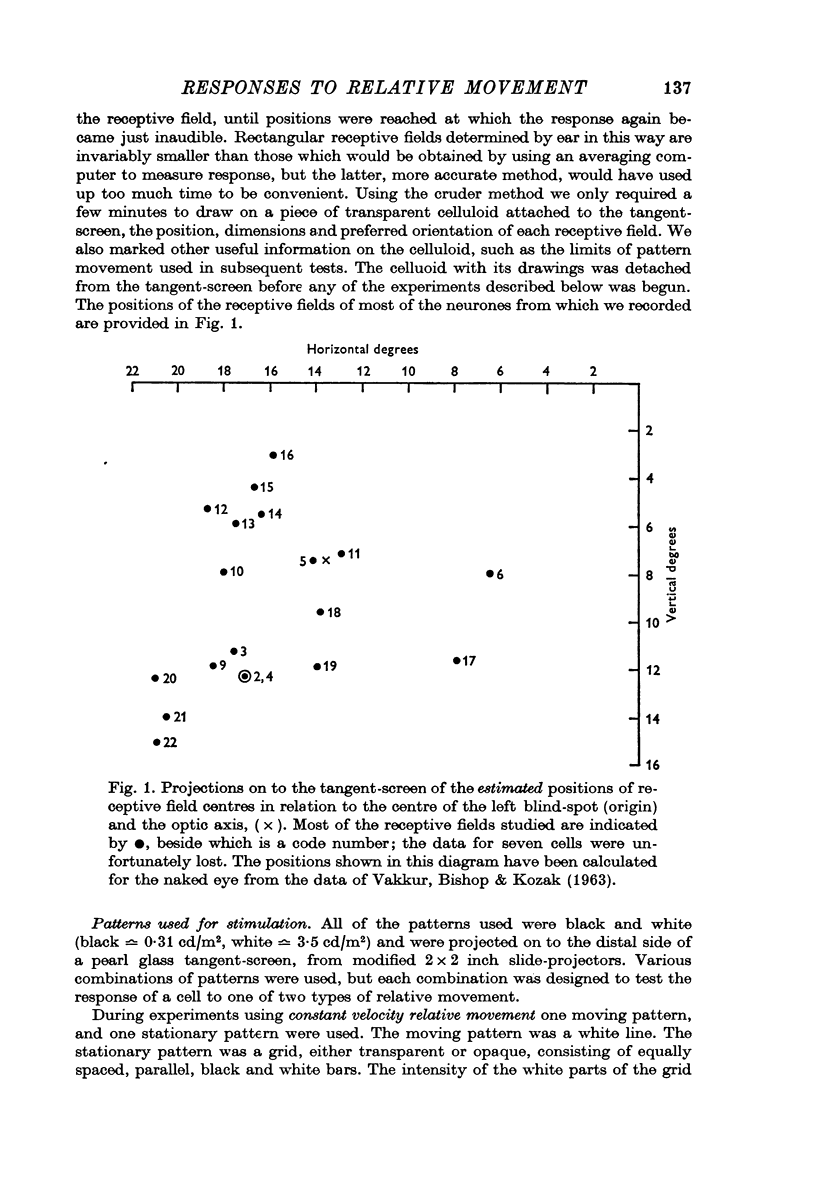
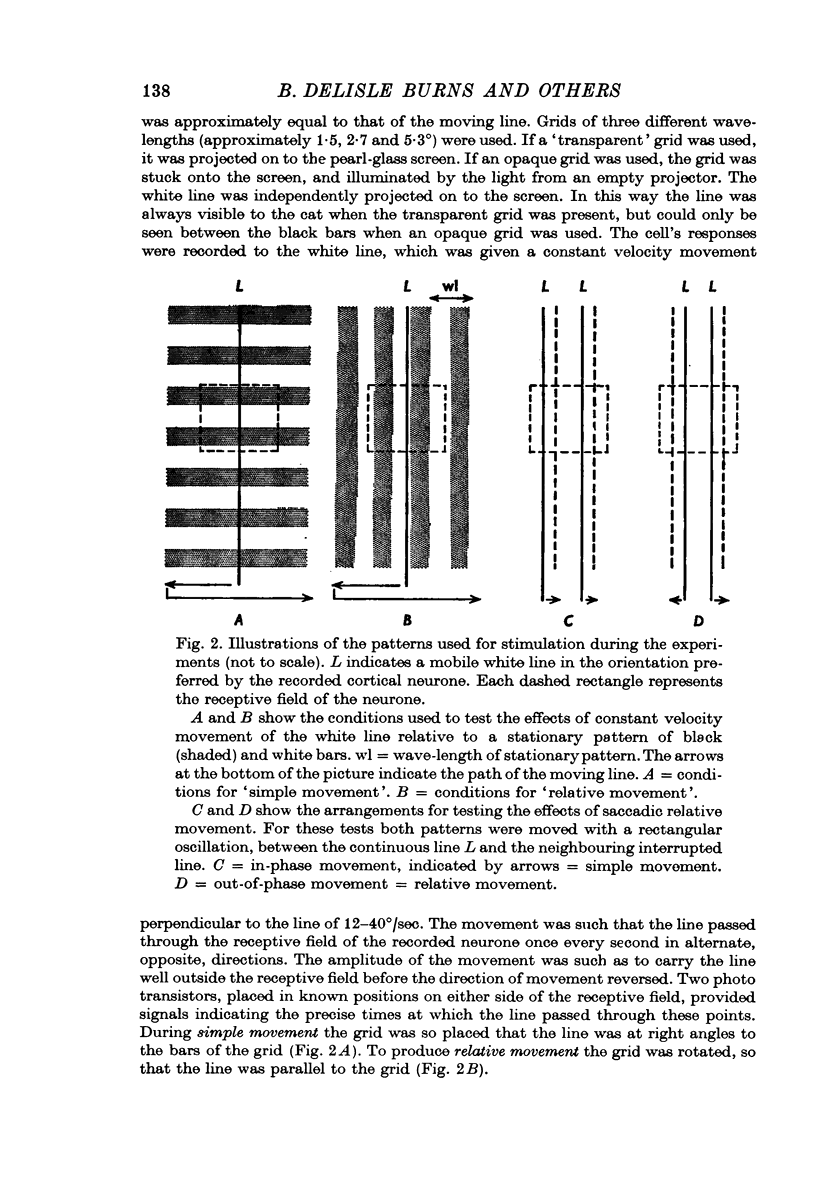

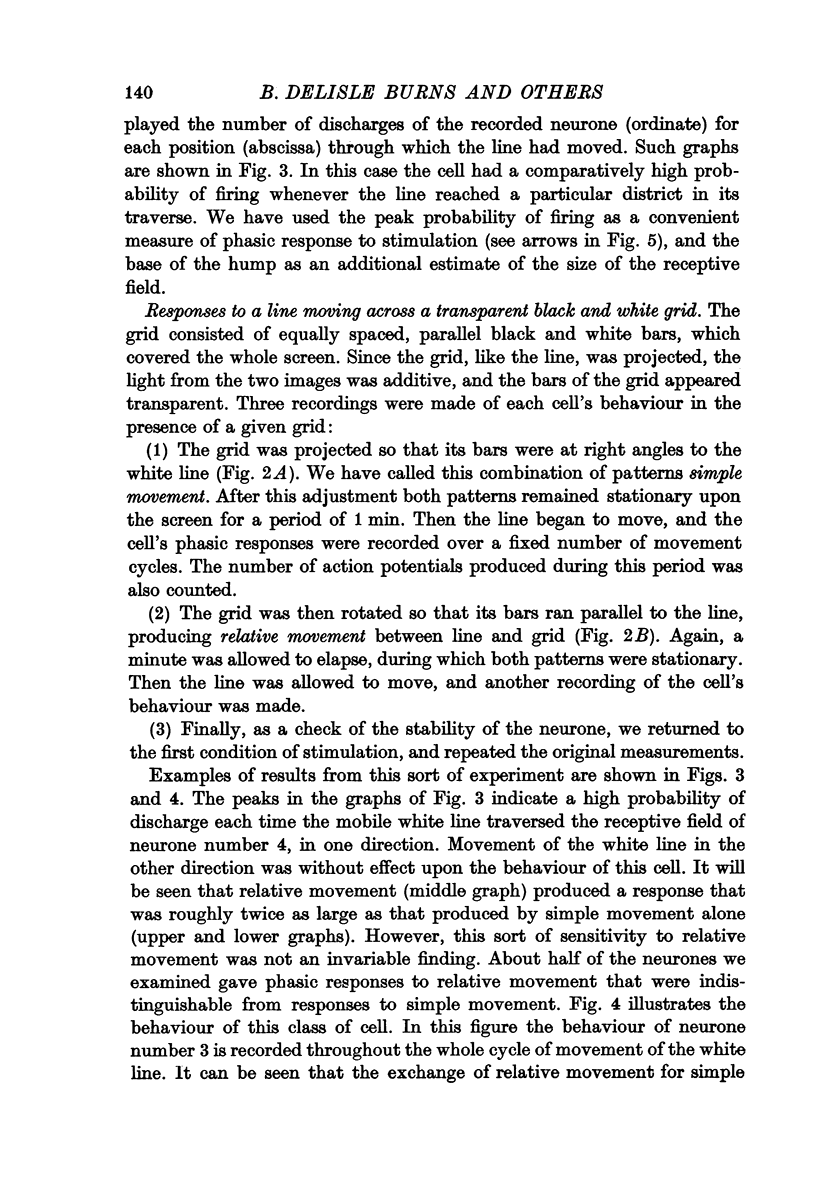
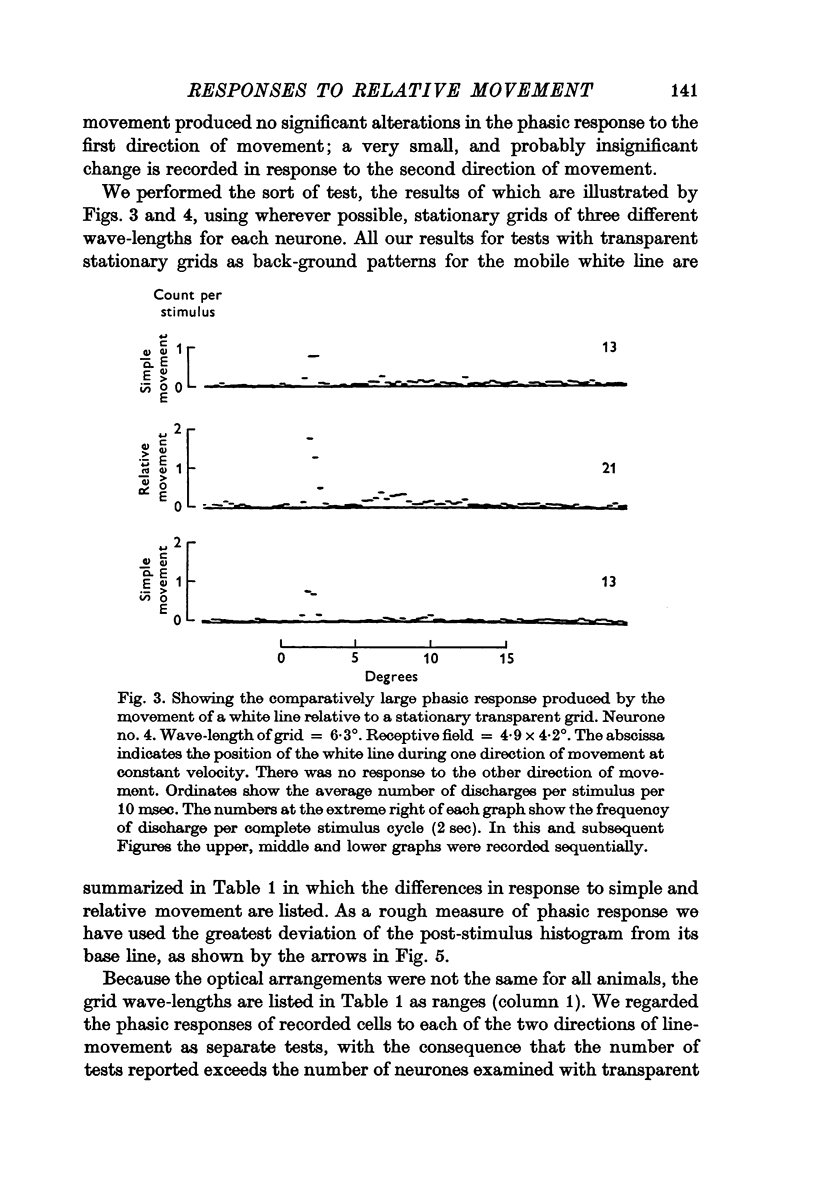
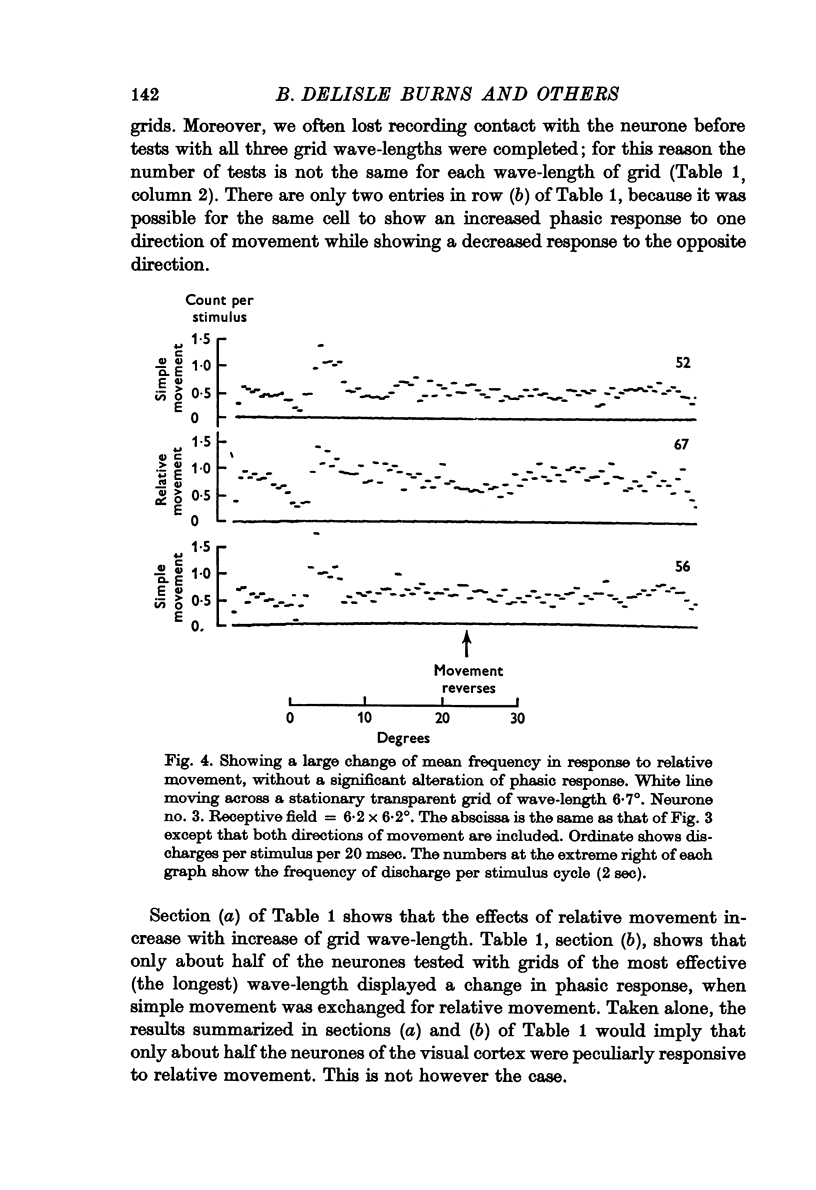
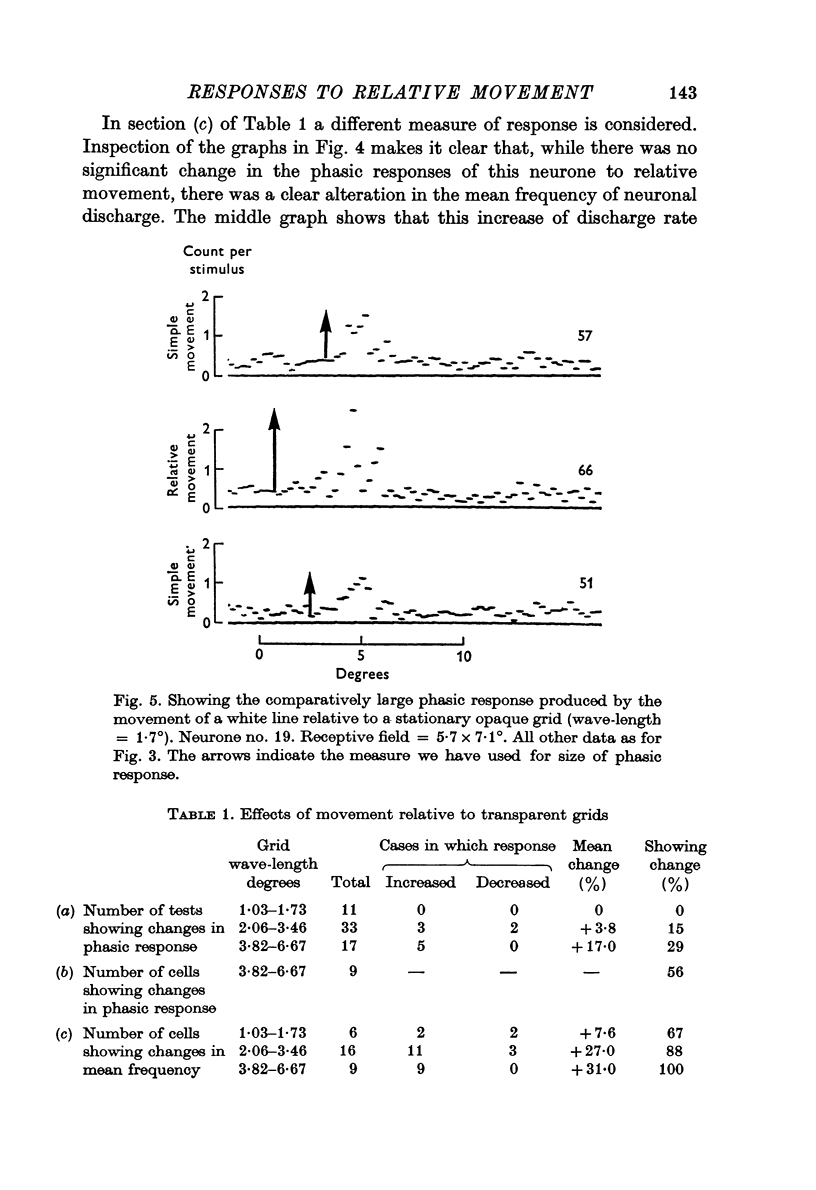

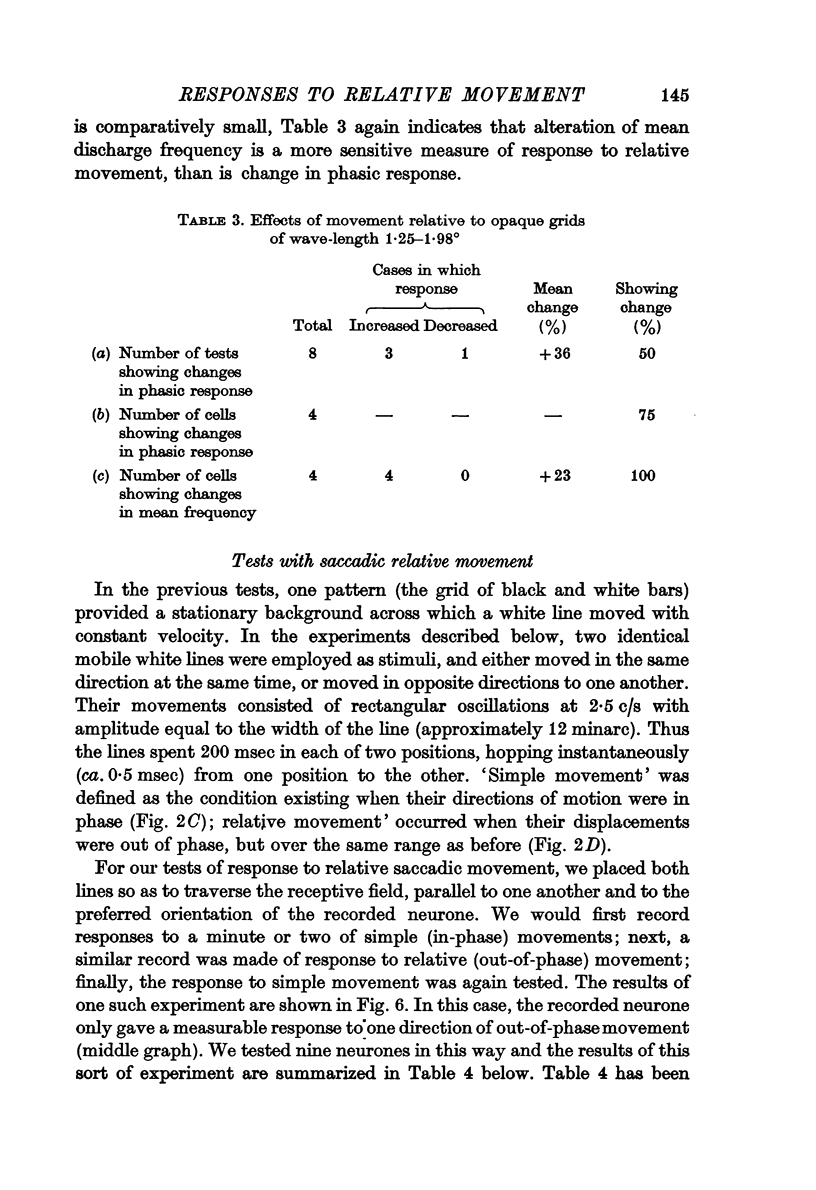
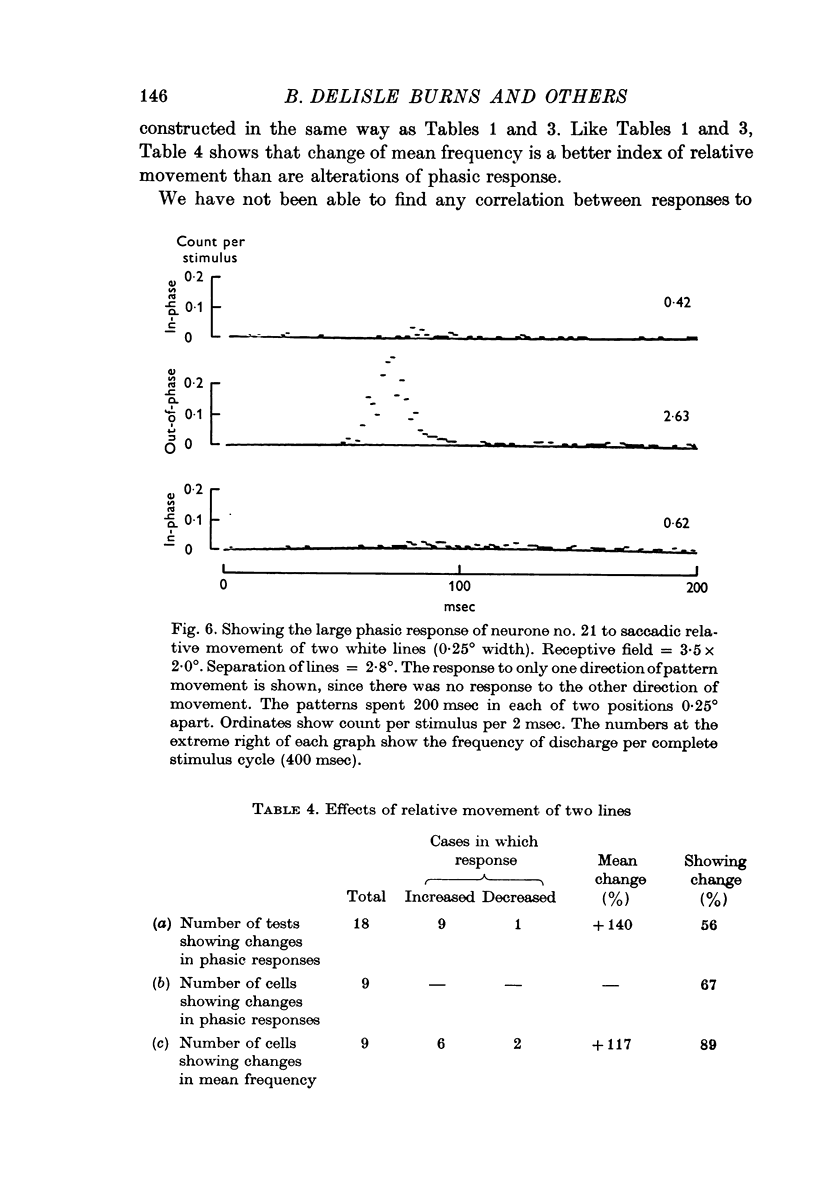

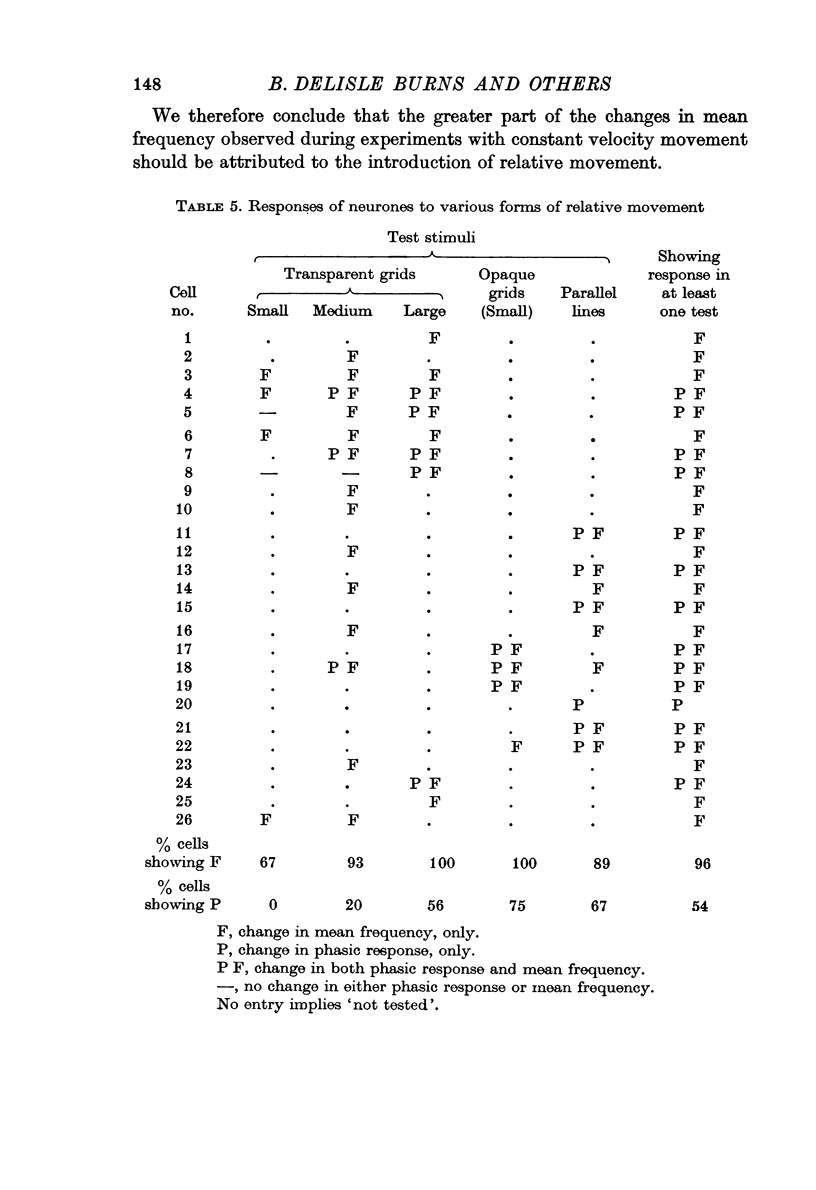

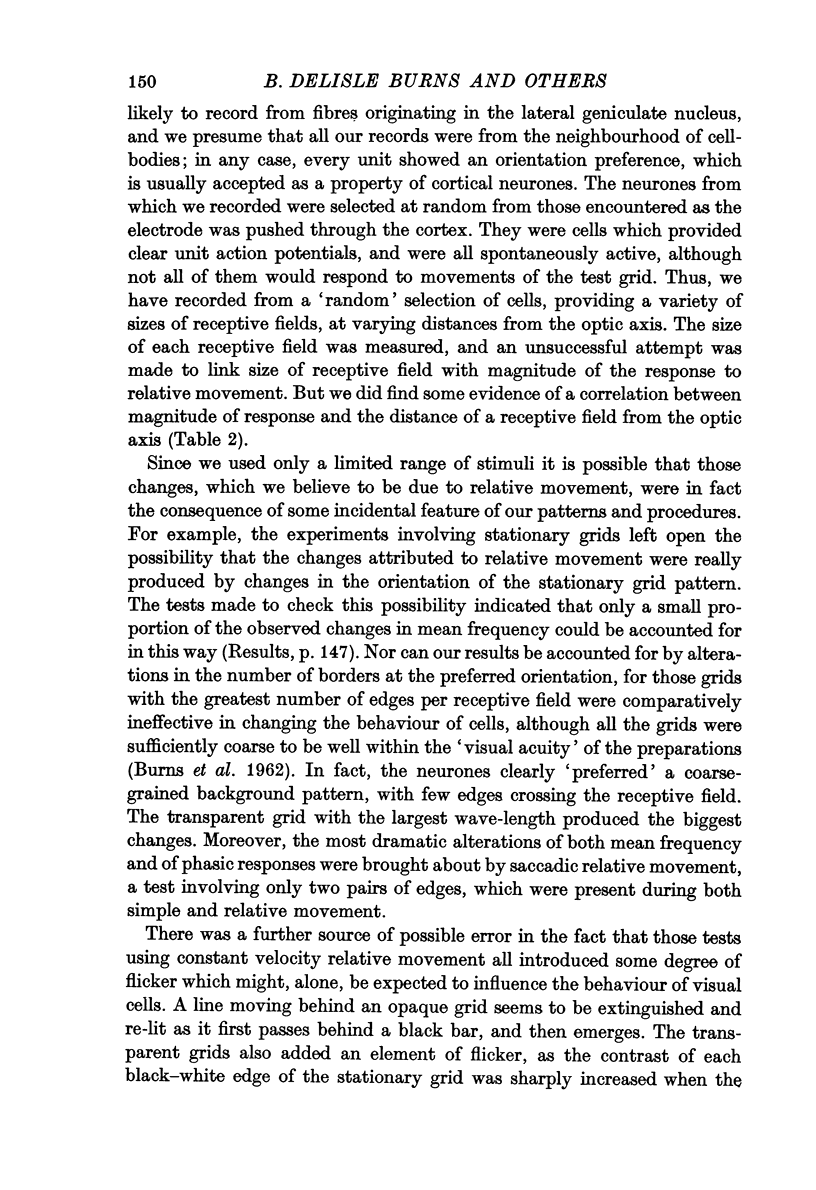

Selected References
These references are in PubMed. This may not be the complete list of references from this article.
- BURNS B. D., HERON W., PRITCHARD R. Physiological excitation of visual cortex in cat's unanesthetized isolated forebrain. J Neurophysiol. 1962 Mar;25:165–181. doi: 10.1152/jn.1962.25.2.165. [DOI] [PubMed] [Google Scholar]
- Burns B. D., Pritchard R. Geometrical illusions and the response of neurones in the cat's visual cortex to angle patterns. J Physiol. 1971 Mar;213(3):599–616. doi: 10.1113/jphysiol.1971.sp009403. [DOI] [PMC free article] [PubMed] [Google Scholar]
- Burns B. D., Webb A. C. The effects of stationary retinal patterns upon the behaviour of neurons in the cat's visual cortex. Proc R Soc Lond B Biol Sci. 1971 Jun 15;178(1050):63–78. doi: 10.1098/rspb.1971.0052. [DOI] [PubMed] [Google Scholar]
- DITCHBURN R. W., GINSBORG B. L. Involuntary eye movements during fixation. J Physiol. 1953 Jan;119(1):1–17. doi: 10.1113/jphysiol.1953.sp004824. [DOI] [PMC free article] [PubMed] [Google Scholar]
- LEIBOWITZ H. Effect of reference lines on the discrimination of movement. J Opt Soc Am. 1955 Oct;45(10):829–830. doi: 10.1364/josa.45.000829. [DOI] [PubMed] [Google Scholar]
- PRITCHARD R. M. Stabilized images on the retina. Sci Am. 1961 Jun;204:72–78. doi: 10.1038/scientificamerican0661-72. [DOI] [PubMed] [Google Scholar]
- VAKKUR G. J., BISHOP P. O., KOZAK W. VISUAL OPTICS IN THE CAT, INCLUDING POSTERIOR NODAL DISTANCE AND RETINAL LANDMARKS. Vision Res. 1963 Nov;61:289–314. doi: 10.1016/0042-6989(63)90004-x. [DOI] [PubMed] [Google Scholar]


